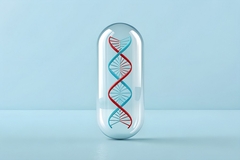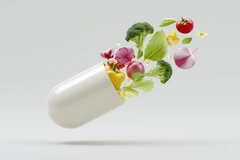Microgreens deemed better mineral source than mature vegetables in malnutrition fight

A recent study suggests microgreens as a solution for global malnutrition by increasing nutrition and diversifying diets. Researchers analyzed and profiled microgreens of broccoli, black radish, red beet, pea, sunflower, and bean, which exhibited high macro-, micro-, and antioxidant capacity.
The study shows that microgreens have higher mineral bioavailability than mature vegetables since they are ingested early.
Published in Scientific Reports, the study reveals one in four people globally are deficient in essential micronutrients. Global food demand is also expected to rise by 35–56% by 2050, while 41.9% of the population cannot maintain a healthy diet.
Nutritional profile
According to the study, red beet microgreens had the highest concentrations of organic acids, especially flavonoids and citric acid, which supported their potential anti-inflammatory and antioxidant properties.
Meanwhile, the highest phenolic content and DPPH (1-diphenyl-2-picrylhydrazyl) antioxidant capacity were found in black radish microgreens, suggesting strong free radical neutralization.
Researchers note that bean microgreens also had high ascorbic acid content, which supports immune health and skin maintenance. Sunflower microgreens showed the highest calcium and fumaric acid levels, suggesting bone health and energy production benefits.
“Broccoli microgreens were richest in phenolic compounds and contained high iron and manganese levels, both critical for red blood cell production. Finally, pea microgreens excelled in phosphorus and copper concentrations, crucial for bone and cardiovascular health,” shares the paper.
 Red beet microgreens had the highest concentrations of organic acids, especially flavonoids and citric acid.Health benefits detailed
Red beet microgreens had the highest concentrations of organic acids, especially flavonoids and citric acid.Health benefits detailed
The study details variations in the bioactive composition of six microgreens. “Bean microgreens had the highest ascorbic acid content (80.45 mg/100 g full weight), while broccoli microgreens exhibited the most significant total phenolic content (825.53 mg GA/100 g full weight).”
The production of collagen and the control of the immune system are two biological functions that depend on ascorbic acid, a strong antioxidant.
Black radish had the highest DPPH scavenging activity at 83.32% thanks to high levels of phenolic and flavonoid compounds.
Red beet microgreens stood out with the highest flavonoid content (1,625 mg/100 g total weight), which researchers suggest may be associated with health benefits such as anti-inflammatory and anti-carcinogenic properties.
“Red beet microgreens had the highest citric acid content, while bean microgreens excelled in succinic acid. These organic acids play critical roles in plant metabolism and human health, potentially influencing these microgreens’ flavor profile and metabolic benefits,” reads the paper.
“The distinct nutrient profiles observed in our study suggest that specific microgreen species could be strategically incorporated into diets to address particular health needs, such as enhancing antioxidant intake or boosting flavonoid consumption.”
The seasons and genetic profile also play a role in influencing aromatic profiles, with mature plants releasing lower volatile compounds. Additionally, the growing medium can influence the quality and nutrient content of the microgreen.
“Based on the identified volatile aromatic compounds, the ranking from most to least aromatic was as follows: black radish, pea, sunflower, broccoli, red beet, and bean,” reveals the study.
The study used a uniform nutrient solution to assess the mineral content of six microgreen species.












